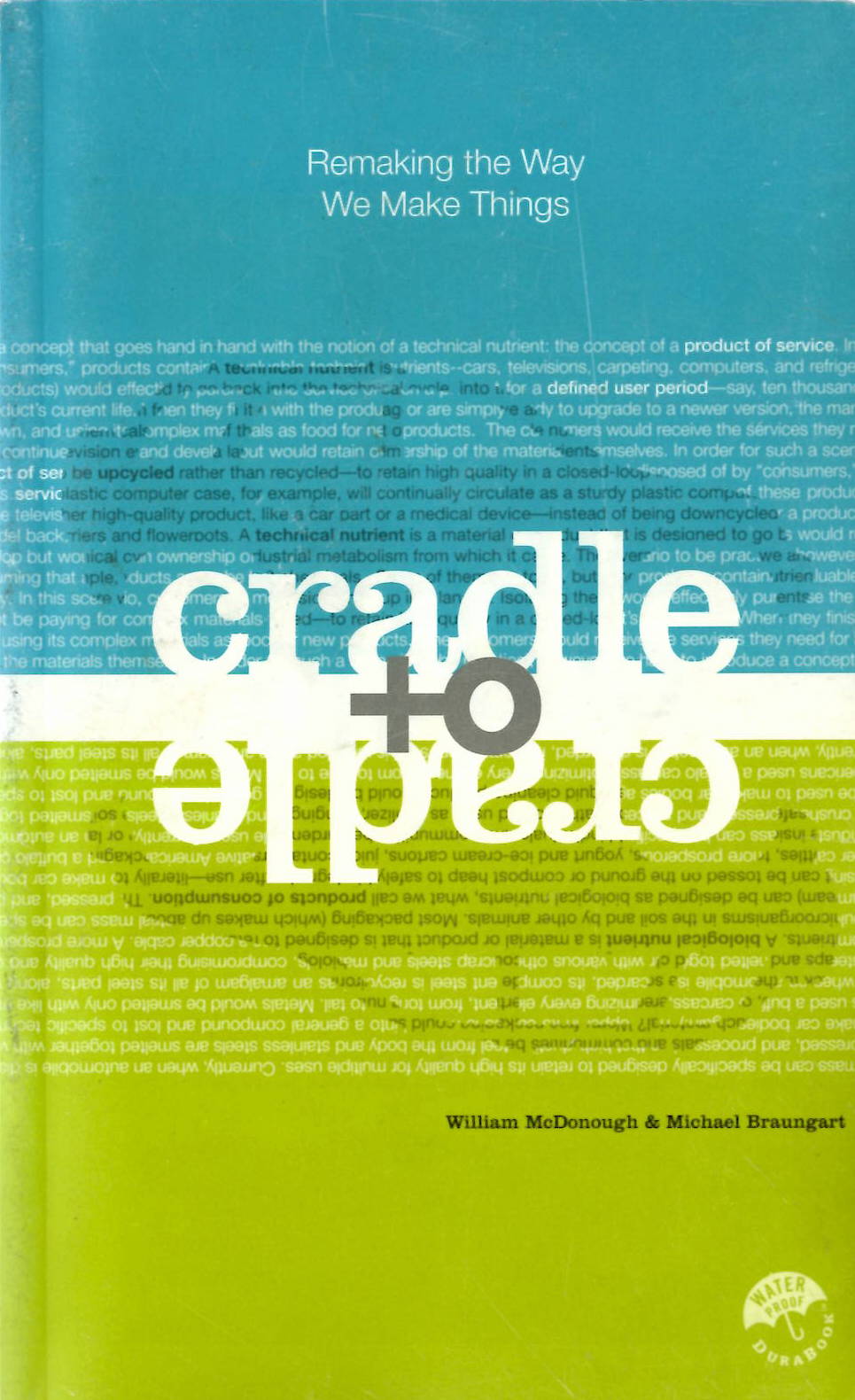
March 02, 2021
Cradle To Cradle: Remaking the Way We Make Things
Consider this: all the ants on the planet, taken together, have a biomass greater than that of humans.Cradle to Cradle, pg 16
Combatting Hyper Consumerism
The advent of the Industrial Revolution brought with it generational cycles of ‘hyper consumerism’. The machines of this ‘revolution’ suck in raw resources (lumber, steel, rubber, sand, gold, etc) and churn out products destined to be purchased (i.e., ‘consumed’) and then ultimately thrown away once the product has reached the end of it’s useful life. This ‘hyper consumerism’ has resulted in a cycle that takes nutrients and resources out of the earth without putting them back in in a way they can be reasonably re-used (or re-assimilated) by the earth.
Plastic is one great example.
For some reason, while I was reading this book last Saturday afternoon, I kept thinking about the bacon I had just eaten and how it came wrapped in plastic packaging (but what doesn’t now). It would seem bacon could just as easily come wrapped in a more biodegradeable packaging, like meat paper or something. The plastic my bacon came wrapped in gets thrown in a plastic trash bag that gets thrown in a landfill somewhere. I love bacon. I’d love it even more if it came wrapped in paper so I could potentially burn it, at least, without releasing harmful toxins in the process.
But still, we throw all trash (paper, plastic, etc), into a plastic bag that ultimately goes to a landfill to eventually become someone else’s problem. So ok, I have not thought my bacon packaging solution all the way through yet…
The purpose of this book is to try to get more people thinking about how to change Industrial Revolution paradigms of consumption and the life cycle of the goods we produce and consume. These are difficult problems deeply ingrained in our society and culture and will take work and education to change.
This book certainly got me thinking about what and how I buy and the lifecycle of the products I use on a day-to-day basis.
Hope For A Sustainable Future
I liked the points brought up about ants and how the biomass of ants exceeds that of humans. If the ants can feed and take care of themselves in such a way that actually benefits the environment (through eco-effective resource usage, soil aeration, etc) then perhaps so can we. Perhaps the ‘Malthusian Trap’, what Thomas Malthus claimed would be caused by population growing faster than food and other resource availability, can be avoided by acting on some of the principles and ideas put forth in this book.
How Do We Change?
My wife has a personal leadership motto: ‘I am a disruptor for positive change!’ She periodically recites this with great enthusiasm. ‘So annoying’, say I, but I do secretly admire her enthusiasm.
What if we all possessed similar mind sets and got to work like ants reversing the ecological damage done during the Industrial Revolution to now. What if we start creating more sustainable patterns of consumption, re-use and up-cycling and only try to buy products with similar goals in mind? What if we start thinking 7 generations into the future about how our decisions today will make an impact?
We could all be disruptors for positive change!
Relevant Links
James Caple
BLOG
cradle to cradle environment sustainability books recycle upcycle re-use